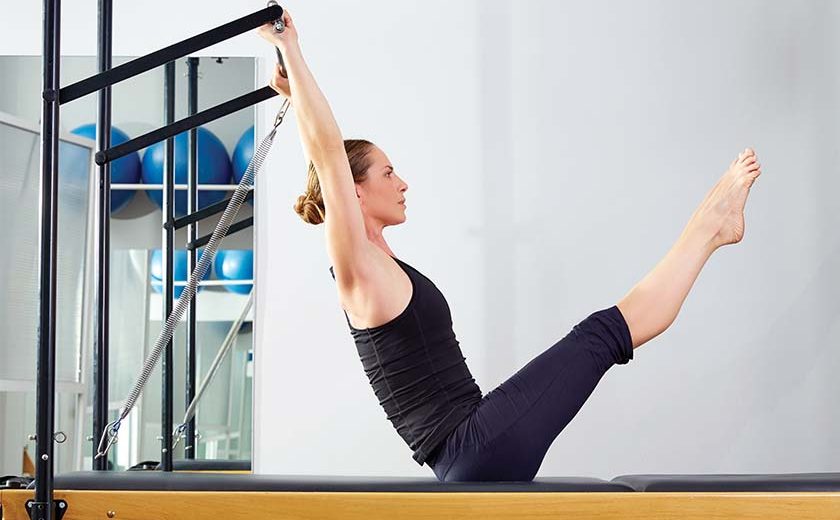“The great thing about pilates is that just about everyone – from couch potatoes to fitness buffs – can do it”
Pilates (pronounced: puh-lah-teez) is a body conditioning routine that seeks to build flexibility, strength, endurance, and coordination without adding muscle bulk. You might think Pilates is a new type of exercise or even a fad, but it has been around for decades, and as the exercise of choice for dancers and gymnasts. It was originally used to rehabilitate bedridden or immobile patients during World War I.
Why Pilates?
The human body is a versatile machine, able to adjust and compensate for muscle weakness caused by physical injury, repetitive athletic regimes, and the daily habitual motor movements of work and home life. But long-term compensation leads to muscle imbalance, permanent misalignments and misspent energy, leaving one’s body susceptible to further, more serious trauma. Pilates is the fitness training solution that combines exercise and physiotherapy for the restoration of proper body alignment and optimum physical performance.
There are two ways to exercise in pilates:
- Today, most people focus on the mat exercises, which require only a floor mat and training. These exercises are designed so that your body uses its own weight as resistance.
- The other method uses a variety of machines to tone and strengthen the body, again using the principle of resistance.
Why is Pilates effective?
Pilates embraces the anatomy and biomechanics of your body: it concentrates on developing those muscles which wrap around joints and are responsible for proper alignment – the deep stabilising muscles of the torso, core abdominal and back muscles, muscles along the spinal column – as well as the scapular regions and your particular weakened muscles. The secret is non-impact resistance that resembles muscular contractions and eliminates stress on your joints, making Pilates safe, versatile, and effective for all ages and fitness levels. Toned, stretched, and lengthened, your muscles will acquire the strength and flexibility needed for a balanced, agile, and healthy body.
Who can benefit from Pilates fitness training?
Whether you are a fitness enthusiast or pure beginner, you can benefit from the Pilates lifestyle. From physical rehabilitation for special needs personage to performance enhancement for seasoned athletes, Pilates is intentionally customised for your unique health history and physical demands. The result is a body that is free of old tensions and ready to gain new altitudes.
The benefits of Pilates
- Exercise safely and effectively toward dynamic functional fitness.
- Free yourself from lower back and joint pain, neck and shoulder tension.
- Lose inches off your waistline and acquire a slim, sleek body without adding bulk.
- Improve your posture, rebalance muscles around joints, and prevent muscle & soft tissue injury.
- Develop and refine your agility and flexibility.
- Observe joint safety with non-impact exercise.
- Improve balance, coordination, circulation, and lung capacity.
- Heighten overall body awareness.
- Relieve stress and tension.
Getting started
The great thing about pilates is that just about everyone – from couch potatoes to fitness buffs – can do it. Keep these tips in mind so that you can get the most out of your pilates workout. But, before you begin any type of exercise programme, it’s a good idea to talk to your doctor, especially if you have a health problem.
- Stay focused. Pilates is designed to combine your breathing rhythm with your body movements. The goal of pilates is to unite your mind and body, which relieves stress and anxiety.
- Be comfortable. Wear comfortable clothes and keep in mind that pilates is usually done without shoes. If you start feeling uncomfortable, strained, or experience pain, you should stop.
- Let it flow. When you perform your exercises, avoid quick, jerky movements. Every movement should be slow, but still strong and flexible. Joseph Pilates worked with dancers and designed his movements to flow like a dance.
- Don’t leave out the heart. The nice thing about pilates is you don’t have to break a sweat if you don’t want to — but you can also work the exercises quickly to get your heart rate going.
Who founded Pilates?
The Pilates Method of exercise was developed by Joseph Pilates in the 1920s. It was originally used as a rehabilitation programme for prisoners of war and was later found to be of great benefit to anyone seeking a higher level of fitness. The work was kept alive over the years by a small group of Pilates’ devoted students until just a few years ago, when exercise science caught up to the principles that Pilates had been teaching all along, and now we enjoy the rich evolution of the Pilates work that we have today.


